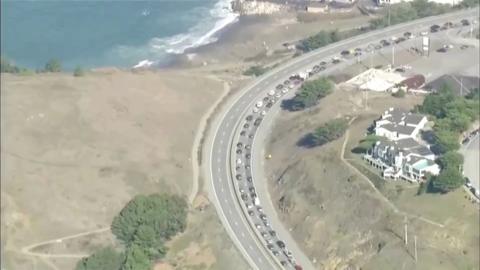Tsunami signs line the roads of many coastal communities along the US West Coast. They mark any "tsunami hazard zone" and often point those in the area to evacuation routes leading them to higher ground.
Those who live in these tsunami zones are encouraged to familiarise themselves with their evacuation routes and have a kit ready for quick evacuation.
California's emergency services website notes a tsunami can hit in as little as 5 to 10 minutes after a large earthquake and sometimes the first wave to hit is not the biggest. It notes if you see water draw out from the shoreline and go out to sea quickly, "escape immediately to higher ground or inland".
The US West Coast is the confluence of a number of the Earth's tectonic plates, and tremors are not uncommon. But a strong 7 magnitude quake isn't typically seen in the region. Experts say there are between 10 and 15 earthquakes of this magnitude that hit globally each year.
There have been eight other earthquakes with a 7 magnitude globally this year, according to data from the US Geological Survey.
The agency says that typically there are about 20,000 earthquakes tracked around the globe each year - about 55 per day.
The area has been struck by a number of major earthquakes, including a 1994 quake that hit Northridge, in the Los Angeles area, killing dozens of people and injuring thousands more, as it wrought billions of dollars of damage to homes and infrastructure.

